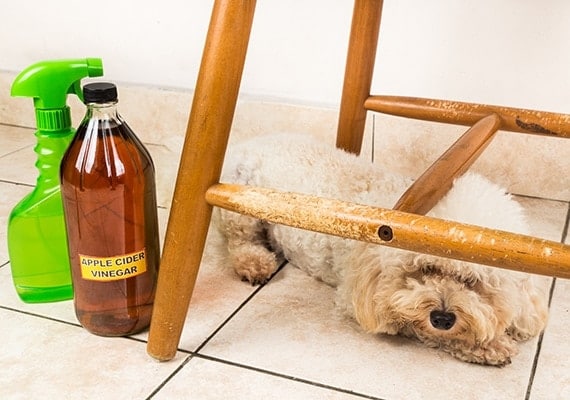Have you recently brought home a new furry friend who seems to have a particular fondness for chewing on wood? Don't worry, you're not alone. Puppies, with all their curiosity and teething troubles, often find themselves nibbling away at your furniture and belongings. But fear not! In this article, we'll explore some highly effective methods to put an end to your puppy's wood-chewing adventures. So, get ready to reclaim your furniture and keep your curious pup out of mischief!
Understanding why puppies chew on wood
Exploring the reasons behind wood chewing
Puppies have a natural instinct to explore their environment, and chewing is a common behavior for them. When it comes to wood, puppies may chew on it for a variety of reasons. One possible reason is teething. Just like human babies, puppies go through a teething phase where their baby teeth fall out and are replaced by adult teeth. Chewing helps relieve the discomfort of teething and provides a soothing sensation for their gums.
Another reason puppies chew on wood is boredom. They are energetic and curious creatures, and if not provided with enough mental and physical stimulation, they may resort to chewing on inappropriate items such as wood. Lack of exercise and mental stimulation can lead to boredom, which in turn can manifest as destructive chewing behavior.
Lastly, puppies may chew on wood due to anxiety or stress. Separation anxiety, changes in their environment, or other sources of stress can trigger this behavior. Chewing acts as a coping mechanism for puppies, helping them alleviate their anxiety and redirect their focus.
The consequences of wood chewing for puppies
While it is natural for puppies to chew, doing so on wood can have negative consequences. Firstly, wood chewing can be dangerous for the puppy's health. Splinters from the wood can cause injuries to their mouths, throat, or digestive tract if ingested. Depending on the type of wood, it could also be poisonous and potentially harm the puppy.
Furthermore, wood chewing can damage furniture, flooring, or other wooden items in your home. This can result in costly repairs or replacements. It is essential to address this behavior early on to prevent any long-term consequences for both the puppy and your home.
Providing appropriate chew toys
Choosing the right chew toys for your puppy
One effective way to redirect your puppy's chewing behavior from wood to appropriate items is by providing them with suitable chew toys. Ensure that the toys you choose are specifically designed for puppies, as they have softer rubber or nylon materials that are gentle on their developing teeth. Look for toys labeled as "chew-resistant" or "durable" to withstand the strong jaws of a growing puppy.
Avoid giving your puppy old shoes, clothes, or other household items as chew toys, as this can confuse them and encourage them to chew on inappropriate objects in the future. Stick to designated chew toys to establish clear boundaries for your puppy's chewing behavior.
Rotating chew toys to maintain interest
Puppies, just like humans, can become bored with the same toys over time. To keep them engaged and prevent them from seeking out wood as an alternative, it is important to provide a variety of chew toys and rotate them regularly. By introducing new toys and swapping them out every few days, you can maintain your puppy's interest and offer them different textures and shapes to explore.
Supervising your puppy's chew toy play
While chew toys are a vital tool in redirecting your puppy's chewing behavior, it is important to supervise their playtime with these toys. This ensures their safety and allows you to correct any inappropriate behavior if necessary. Keep a close eye on your puppy, especially during the early stages of training, and intervene if they show signs of chewing on wood or other forbidden objects. Redirect their attention to an appropriate chew toy and praise them when they engage with it.
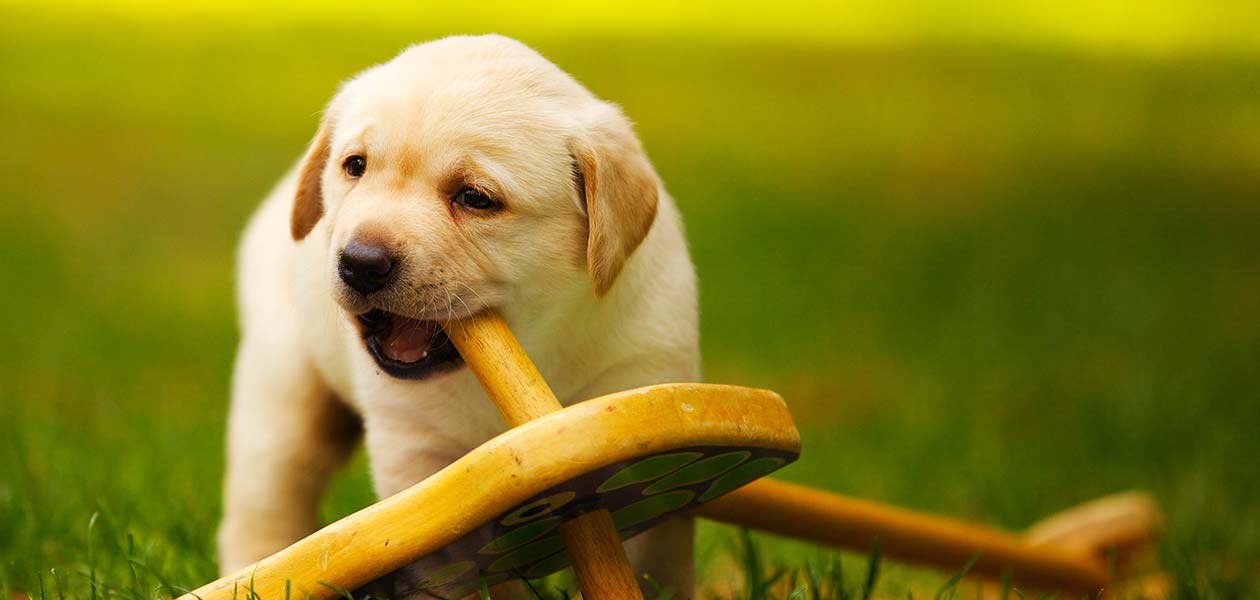
This image is property of dogsnet.com.
Using deterrent sprays
Identifying safe and effective deterrent sprays
Deterrent sprays can be a helpful tool in preventing puppies from chewing on wood. Look for sprays specifically formulated for deterring chewing behavior in pets. These sprays typically have a non-toxic bitter taste that discourages puppies from chewing on treated surfaces. It is crucial to choose a spray that is safe for puppies and does not contain any harmful chemicals.
Reading customer reviews and seeking recommendations from a trusted veterinarian can help you identify effective and pet-friendly deterrent sprays. It is important to note that not all puppies will be deterred by a spray, so it may take some trial and error to find the most effective product for your furry friend.
Applying deterrent sprays to wooden surfaces
Once you have chosen a safe and effective deterrent spray, it is time to apply it to the wooden surfaces that your puppy tends to chew on. Thoroughly clean the surfaces before applying the spray to ensure maximum effectiveness. Follow the instructions on the spray bottle, as each product may have different application guidelines.
Be consistent in reapplying the deterrent spray as necessary, especially after cleaning or if your puppy shows renewed interest in the previously treated area. Over time, the unpleasant taste and smell associated with the spray will discourage your puppy from chewing on wood, redirecting their focus to appropriate chew toys.
Behavior correction techniques
Redirecting your puppy's chewing behavior
Redirecting your puppy's chewing behavior involves teaching them what is acceptable to chew on and providing them with appropriate alternatives. When you catch your puppy chewing on wood, calmly and gently remove the object from their mouth. Immediately replace it with an approved chew toy and encourage them to chew on it instead. Consistency is key, so be prepared to redirect them multiple times until they understand the desired behavior.
Using positive reinforcement to encourage appropriate chewing
Positive reinforcement is a powerful tool in training puppies. Whenever you see your puppy chewing on an approved chew toy, shower them with praise and reward them with treats or affection. This positive association creates an incentive for them to continue engaging with the appropriate chew toys instead of wooden items. In time, your puppy will learn that chewing on wood leads to no rewards, while chewing on their toys earns them praise and goodies.
Utilizing a firm 'no' command when needed
While positive reinforcement is highly effective, there may be instances where you need to use a firm 'no' command to correct your puppy's behavior. When you catch them in the act of chewing on wood, say a clear and assertive 'no' to interrupt their behavior. Immediately redirect their attention to an appropriate chew toy and praise them once they engage with it. Consistency and clear communication are essential in helping your puppy understand the boundaries of acceptable chewing.
Removing access to chewable wood items
Prevention is key when it comes to stopping your puppy from chewing on wood. It is important to remove access to chewable wooden items whenever possible. Close doors to rooms with wooden furniture or block off areas where there are exposed wooden surfaces that your puppy can reach. By limiting their access to wood, you create an environment that promotes appropriate chewing behavior and reduces the chances of them engaging in destructive chewing.
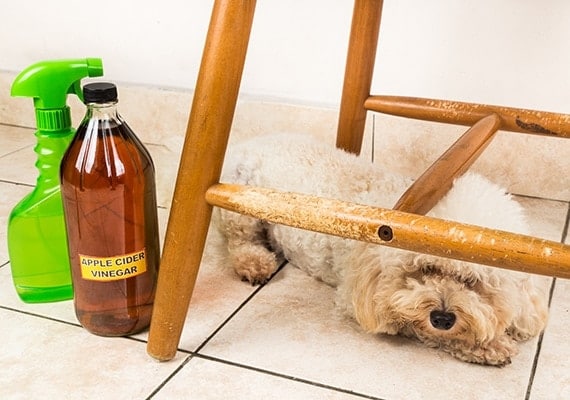
This image is property of doglab.com.
Crate training
Understanding the role of crate training in reducing chewing
Crate training is a beneficial technique that can help in reducing chewing and promoting good behavior in puppies. When used correctly, a crate provides a safe and comfortable space for your puppy, limiting their access to objects they may be tempted to chew on. This can be especially useful when you are unable to supervise them or during periods when they are more likely to engage in destructive chewing, such as at night or when you are away from home.
Creating a positive association with the crate
To ensure a positive crate training experience for your puppy, it is crucial to create a positive association with the crate. Make the crate a comfortable and inviting space by lining it with soft bedding, providing a few toys, and placing treats inside. Encourage your puppy to explore the crate by leaving the door open and letting them enter and exit freely. Positive reinforcement, such as treats or praise, whenever your puppy willingly enters the crate, helps them associate it with positive experiences.
Using the crate as a safe space for your puppy
When your puppy needs to be confined or when unsupervised, crate training can be a useful tool in preventing wood chewing. Ensure that your puppy has had ample exercise and mental stimulation before placing them in the crate. This helps tire them out and reduces the likelihood of them engaging in destructive behavior out of boredom. By providing a safe space like a crate, you can be confident that your puppy is secure and unable to chew on wood or other inappropriate items.
Enrichment activities
Engaging your puppy in physical exercise
Physical exercise plays a crucial role in preventing destructive chewing behavior in puppies. A tired puppy is less likely to engage in excessive chewing out of boredom or pent-up energy. Regular exercise, such as walks, runs, or playtime at the park, provides an outlet for their energy and keeps their bodies active and healthy. Aim for at least 30 minutes to an hour of physical activity daily, depending on your puppy's breed and age.
Mental stimulation through interactive toys and puzzles
In addition to physical exercise, mental stimulation is equally important to keep your puppy engaged and satisfied. Interactive toys and puzzles are designed to challenge your puppy's problem-solving skills and keep their minds occupied. These toys often involve hiding treats or requiring your puppy to solve a puzzle to access a reward. Engaging your puppy in these mentally stimulating activities helps redirect their focus away from wood chewing and provides them with a constructive outlet for their energy.
Structured play sessions to tire out your puppy
Structured play sessions are a great way to tire out your puppy and prevent destructive chewing behavior. Set aside dedicated playtime each day to engage in interactive activities with your puppy. This can include playing fetch, practicing basic commands, or engaging in agility exercises if appropriate for your puppy's age and breed. These sessions not only tire out your puppy physically but also strengthen your bond and provide mental stimulation through engaging with you and following commands.
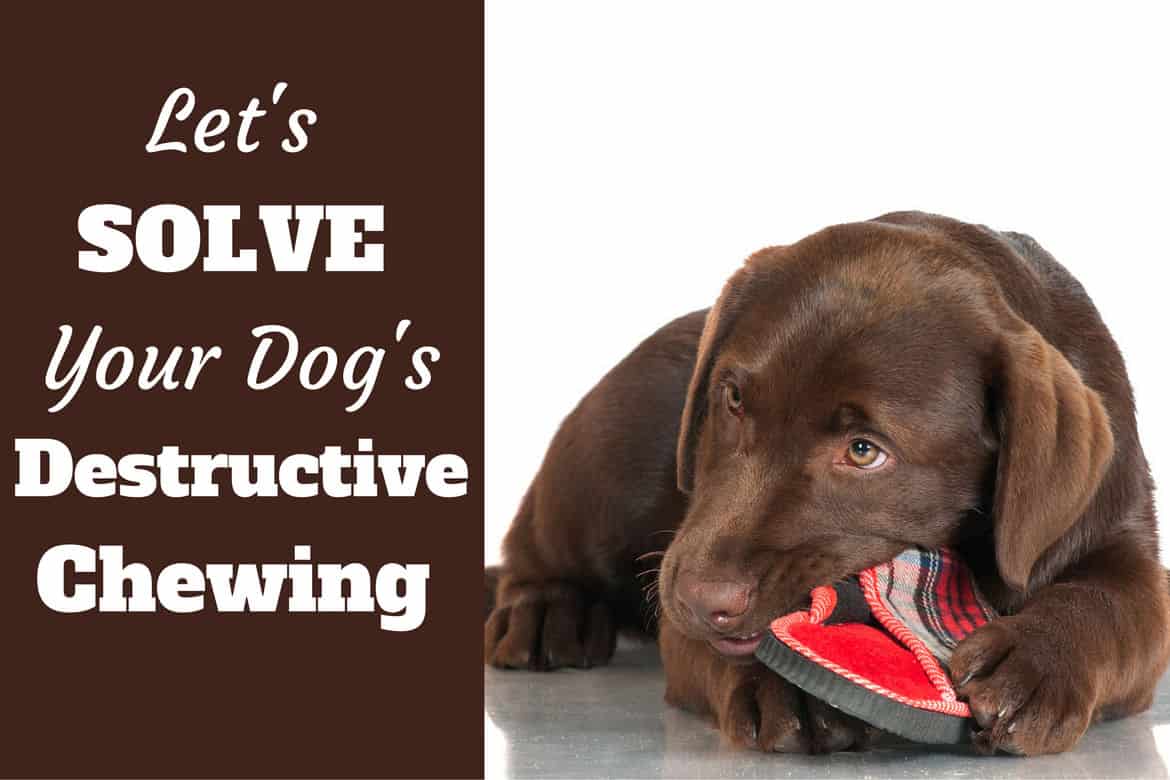
This image is property of www.labradortraininghq.com.
Engaging in training sessions
Teaching your puppy basic commands
Training is an essential aspect of puppy development, and it can play a significant role in curbing destructive chewing behavior. Teaching your puppy basic commands, such as "sit," "stay," and "leave it," helps establish clear communication between you and your furry friend. When your puppy understands these commands, you can redirect their attention away from wood and onto appropriate behaviors. Training sessions also provide mental stimulation and strengthen the bond between you and your puppy.
Using impulse control exercises to prevent chewing
Impulse control exercises are another valuable tool in preventing chewing behavior. These exercises teach your puppy to resist the urge to immediately grab or chew on items. Start by presenting an object of interest to your puppy and instructing them to "leave it." Reward them with treats and praise when they demonstrate self-control by refraining from touching or chewing the item. Gradually increase the difficulty by using items that are more tempting for your puppy. These exercises help develop patience and discipline, reducing the likelihood of destructive chewing.
Building a strong bond through training
Training sessions provide more than just behavior correction. They offer an opportunity to foster a strong bond between you and your puppy. Positive reinforcement training methods build trust and create a positive association between you and your puppy. As you work together during training sessions, you deepen your connection and establish yourself as a reliable and respected figure in their life. This bond can help prevent destructive behaviors, including wood chewing, as your puppy seeks to please and engage with you instead.
Establishing a chewing schedule
Creating a consistent routine for meals and chew time
Establishing a consistent routine for meals and designated chew time can help manage your puppy's chewing behavior effectively. By having scheduled mealtimes, your puppy will be less likely to resort to chewing on wood out of hunger or boredom. Additionally, setting aside specific times for chew toy play allows your puppy to satisfy their natural chewing instinct without resorting to inappropriate items. Consistency in the schedule helps create structure and boundaries for your puppy, making it easier for them to learn and follow appropriate behaviors.
Incorporating supervised chewing sessions in the schedule
In addition to having dedicated chew toy playtime, it is important to supervise these sessions closely. While chew toys are safe alternatives to wood, accidents can still happen. By supervising your puppy during chew time, you can quickly intervene if they start chewing on a dangerous or inappropriate item. Furthermore, supervised sessions allow you to assess which toys your puppy enjoys the most and rotate them accordingly to maintain their interest and engagement.

This image is property of www.rescuedogs101.com.
Addressing anxiety and boredom
Recognizing signs of anxiety or boredom in puppies
Addressing underlying issues such as anxiety or boredom is crucial to prevent wood chewing in puppies. It is important to recognize the signs of anxiety or boredom in your puppy, which may include excessive pacing, whining, destructive behavior, or abnormal clinginess. If you suspect your puppy is experiencing anxiety or boredom, it is essential to address the root cause rather than just focusing on the chewing behavior itself.
Implementing methods to alleviate anxiety or boredom
Reducing anxiety or boredom involves implementing methods that provide comfort and stimulation for your puppy. This can include providing them with a crate or designated safe space, playing calming music or white noise, using calming pheromone sprays, or even seeking professional help if the anxiety is severe. Engaging in interactive activities, such as obedience training or scent games, can also keep your puppy mentally stimulated and alleviate any feelings of boredom. Addressing these underlying issues can significantly reduce the likelihood of wood chewing as a coping mechanism.
Seeking professional help
Consulting a professional dog trainer or behaviorist
If you find that despite your best efforts, your puppy's wood chewing behavior persists or worsens, it may be time to seek professional help. Consulting a professional dog trainer or behaviorist can provide valuable insights and guidance specific to your puppy's needs. A professional can assess the underlying reasons for the chewing behavior, tailor a training plan to address it, and provide you with the necessary tools to redirect your puppy's behavior effectively.
Understanding when and why outside help may be necessary
Seeking professional help is essential when all other methods have been exhausted, or if you are facing challenges beyond your expertise. It is important to remember that every puppy is unique, and what works for one may not work for another. Outside help becomes necessary when the wood chewing behavior poses a threat to your puppy's health or causes significant damage to your home, or if you feel overwhelmed and unsure about how to address the issue effectively.
In conclusion, understanding why puppies chew on wood is crucial in addressing this behavior effectively. By providing appropriate chew toys, using deterrent sprays, implementing behavior correction techniques, crate training, engaging in enrichment activities, training sessions, and establishing a consistent routine, you can redirect your puppy's chewing behavior from wood to more appropriate outlets. Addressing and alleviating anxiety or boredom, as well as seeking professional help when needed, are key steps in stopping your puppy from chewing on wood and promoting a healthy and happy environment for both you and your furry friend.
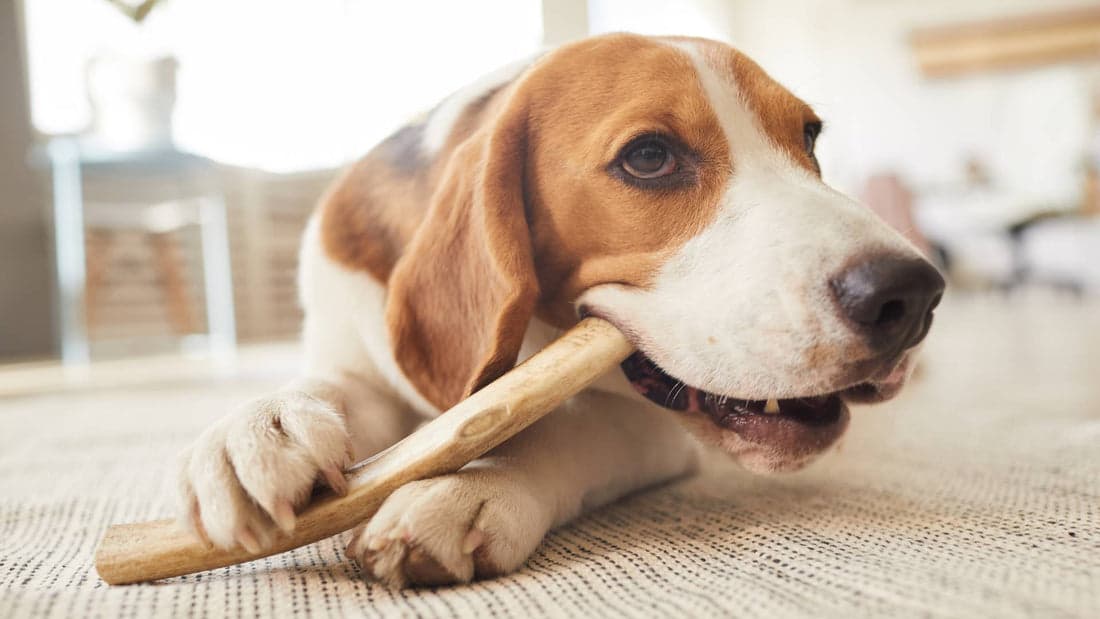
This image is property of dragonflyproducts.co.uk.

